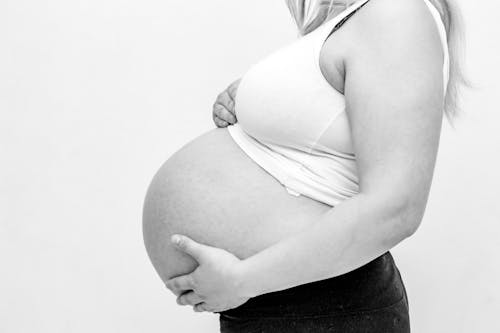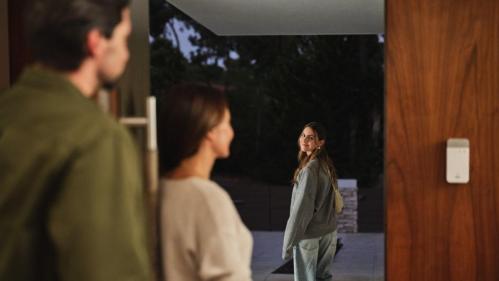We’re in a very fragile place after giving birth. Our bodies need time to rest and recover from a body-altering event. It’s had nine months to get into the state it’s in post partum, so why are we expected to just bounce back afterwards like nothing has changed?
Back pain, weakened, leaking bladders, heavy feelings around the vulva – these feelings are all perfectly normal post partum. But what can we do about them to protect ourselves long term and how long should these problems last before it before they needs further attention?
If a physical problem is bothering you, ask your GP for help at any time. They can advise you and the GP can refer you to a specialist if necessary. Your postnatal check at around 6 to 8 weeks after the birth of your baby is a good time to talk to the GP about any physical or mental health problems you've had since the birth.

But in the meantime, there are exercises and movement you can do to help your core recover from birth. One of the main issues post partum that lots of women suffer with ‘Diastasis Recti’. It affects the ‘six pack’ ab muscles at the front of your abdomen, running from your breastbone down to your pubic bone. Separation of these muscles is perfectly normal during pregnancy as your core has to make room to accommodate your bump. But when the splitting of these muscles lasts for longer than 10-12, then it becomes a problem that needs to be looked at, or ‘Diastasis Recti’.
The muscles are weakened by the separation and it can affect lots of other functions in the body too. Because your core supports lots of other bodily movements, any movement in your ribcage or pelvis area can cause pain or pressure in your core. Your muscles aren’t torn, they’re just separated and there are lot of ways to help them recover.
Andrea Allen, an Instagram Mom Fitness Coach who can be found @deliciouslyfitnhealthy, helps moms feel awesome after having their babies. She's a fitness trainer who specialises in postpartum bodies, Diastasis Recti, Macro/Workout and pregnancy plans.
She shares her own journey with Diastasis Recti and other post partum problems on her page and has an audience of over 433,000, showing just how much of a need there is for this content out there amongst mums. Mother of three, she shares her workouts and exercises to help keep her core in check and ensure that her post-baby body is as prepared as it can be for the work of motherhood.
‘I use to think Pelvic floor & inner core stuff was fluff.. until I had twins’ the fitness trainer shared in a recent post. ‘I couldn’t run 10 feet without peeing my pants, my lower back pain was crazy and my belly would not flatten postpartum no matter what! It was a game changer but you have to give it a chance and be consistent. You have to look at it like rehab for your core abs - it’s never too late.
‘I am going to call it like it is when it comes to inner core exercise…it’s slow…it’s boring…you will wonder if it’s even working at first…but with time it works like a freaking champion. I have watched my own issues go away along with 1000’s of other women who take the time to connect to their pelvic floors, transverse abs, and then add inner core exercises to strengthen and heal their stomachs. It’s no joke!’
Her page is dedicated to combatting ‘mommy tummy’, which refers to problems with Diastasis Recti, leakage and back pain. This is not a page for body shaming or special ‘getting your bod back’ diets – it’s all about support and strength, which is super important to a new mother. The pressure to be right back on your game, both physically and mentally is immense as a new mother. But Andrea slows it down and brings it back to the basics – reteaching your body how to do its job.
‘Healing and strengthening the core at any time postpartum is crucial for creating a more functional core, flatter belly, improving the Pelvic floor, stop urine leakage, recover postpartum & more are done during exercises like these AND during weight lifting, cardio, and all your daily functions.
‘You can’t do core healing exercises for 5 minutes a day and be mindless the rest of the day!! It’s laced into all your movements…Let’s start with feeling and understanding the interaction of the diaphragm, pelvic floor and transverse abs and breathing, add movements like seen here (limbs extending away, mastering core pressure, and relaxing and contracting the PF properly). Next is being aware of what it’s doing in other activities.’
She shared how she developed Diastasis Recti during her pregnancy with her twins and how mainstream fitness workouts were just making her feel worse and exacerbating her symptoms. It was only after going to a Women’s PT & Continued Ed. as a trainer that she began to understand how the core linked to every part of the body as a support system for movement and how pregnancy affects its ability to function.
‘If you already have DR & you’re pregnant you can prevent it from worsening by learning to connect your core & protect it during exercise/daily activities through core breathing.

‘Learn to contract AND relax your pelvic floor (PF). Both are helpful in labour and improving urine leakage at any point. You can’t just focus on lifting the PF. You have to relax it to push the baby out. You don’t want to “bare down” when pushing. Pushing down is not relaxing the PF. You should never feel a bulge down.
‘Modify your movements with your growing belly. It is easier to connect the core during a push-up in the 1st tri than the 3rd no matter how strong supporting muscles are. Any coning is a sign that the core is having trouble with pressure. It’s truly a small window of time in the grand scheme of things so be careful.
‘Be aware of your posture & how you lift things. Whether it’s during strength training or daily activity lift the pelvic floor & draw the transverse abs in as you move against the resistance of a weight to prevent intra-abdominal pressure pushing out.
‘It’s NEVER too late to prevent more damage AND start improving your core so don’t be discouraged!’










